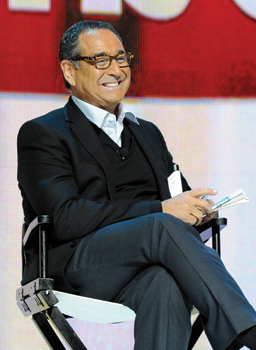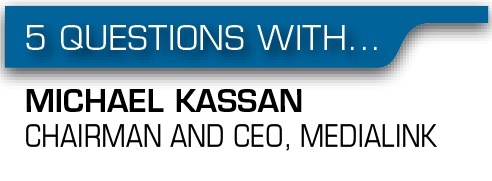Michael Kassan, chairman and chief executive of media and marketing advisory firm MediaLink, has been a trusted adviser to myriad major brands and publishers, including Dow Jones, Clear Channel, Unilever, Microsoft, AT&T and General Electric. The former president and CEO of Initiative Media, Kassan has been a focal point of the emerging intersection between the worlds of Madison Avenue and Silicon Valley. Kassan will be a featured speaker at this week’s CSE Sports Marketing Symposium in New York City, and he spoke with SportsBusiness Journal staff writer Eric Fisher.
■ You’ve mentioned that marketing is now more chaotic than ever. What are the best means for brands to break through that chaos and noise?
KASSAN: The same requirements exist. The answer is to have contextually relevant, timely messages to people who are in market for your products and services. It’s still Marketing 101, and I don’t think it’s going away. What technology and the social sphere are allowing us to do is target those messages smarter, better and faster.
■ One of your themes at MediaLink has been fostering a merger between the worlds of advertising, technology and entertainment. Where do you see that convergence going?
KASSAN: I talk about this a lot, this mashup between somebody who’s your CIO or CTO, and your CMO. Historically, they didn’t talk very often. Now, what’s happening is that more and more, marketing decisions are being made by the technology folks. And more and more, technology decisions are being made by the marketing folks. As a result of that, you’ve had to re-educate both sides of that conversation. That’s a big trend happening in the industry. There’s a lot of opportunity here, and it leads to better decisions.
■ We’ve seen many brands lately get involved in producing their own content. What is the future of branded
 |
Kassan says technology and social media allow for smarter, targeted marketing.
Photo by: Getty Images |
content?
KASSAN: Brands as publishers is a big development. They’re in the content business. You ask Coca-Cola, they’re in the liquid content business. They want to send you content. They don’t want to send you commercials. As we traverse what one of the agencies calls POEM — paid, owned, and earned media — the question is how do we make all of that work? Because as brands become publishers, their owned media becomes ever more important than their paid media. And with the virality that comes from developing good content, just look at what our good friends at Unilever did with the Dove “Journey to Comfort” campaign and the gigantic success that became. Word-of-mouth still works. We just don’t have to rely on street-marketing teams like we did seven, eight, 10 years ago. Now you just hit a button, one-to-many.
■ You work with many newspapers, including The Wall Street Journal and New York Post, on their digital initiatives. How do you prospect the success of the newspaper industry going forward, particularly with regard to paywalls?
KASSAN: I think people will understand you have to pay for things. As much as people thought the music industry would never recover, and it hasn’t in its former form, I don’t really hear about people stealing music anymore. I think they Shazam it, they buy it, they do whatever they do. I’m sure there’s still a cottage industry of content being stolen, but I think there’s a general realization you have to pay for what people do. So I think paywalls of some sort will have legs and will be meaningful. My Wall Street Journal or Post subscription, for example: I like the ease of being able to get it wherever, whenever and however, and I understand I have to pay for that.
■ You just made an angel investment in startup photo mashup company Snaps. What attracted you to this company?
KASSAN: I use Instagram because of my grandchildren. It’s important to me. But from a commercial standpoint, I think Snaps [is] utilizing the platforms well, using visual stimuli, and it works. Good pictures tell a good story, and I think Snaps has a good idea. They’ve got a unique view on how to integrate brands with kind of a mix of a Pinterest model with other stuff, and the notion of technology as a brand stimulus.





